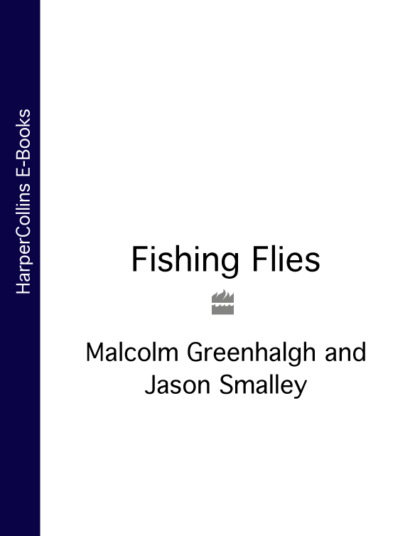По всем вопросам обращайтесь на: info@litportal.ru
(©) 2003-2024.
✖
Fishing Flies
Настройки чтения
Размер шрифта
Высота строк
Поля
Eyes: Lead eyes.
GOLDHEAD DAMSEL
Hook: Nymph, size 12.
Thread: Olive.
Tail: Olive marabou.
Abdomen: Olive ostrich herl.
Rib: 101b clear mono.
Thorax: Goldhead.
Wing cases: Brown speckled partridge feather, dyed olive, tied over back of thorax.
Head: Fine olive dubbing, with thread painted red at front.
Eyes: Green beads.
Doug Jorgensen’s DAMSEL NYMPH is fairly similar in style.
DAMSEL NYMPH
Hook: Streamer or nymph, size 12.
Thread: Olive.
Tail: Olive marabou.
Abdomen: Olive Antron.
Rib: Fine gold wire.
Thorax: As abdomen.
Wing cases: Duck or goose quill dyed olive.
Legs: Olive marabou tips tied in at sides.
RUMPF DAMSEL FLY NYMPH
Hook: Nymph, sizes 12–14.
Thread: Black.
Tails: Tips of 3–4 cock pheasant tail fibres.
Body: Mix of olive and golden-olive synthetic fur or seal’s fur, with a little twinkle (e.g. Laser Light and Lightbrite).
Rib: Fine copper wire.
Wing cases: Cock pheasant tail fibres.
Eyes: Burnt mono.
Invented by John Rumpf of South Australia, this should be fished in lake margins where real damsel fly nymphs abound.
Gene Kugach gave, in Fly Fisher’s Pattern Book (2000), George Cik’s excellent pattern. This is tied front to back: tie in the eyes first, then dub the thorax, then tie in the wool on top just behind the eye of the hook and take that back to the rear of the hook shank/thorax. There, whip finish leaving the remains of the wool sticking back. Trim to length to make the abdomen, and tease the tip to create a suggestion of the three tails.
DAMSEL NYMPH (GEORGE CIK)
Hook: Wet fly, size 8–10.
Thread: As body colour.
Extended abdomen/tail: Wool strands, olive, green or brown.
Thorax: Olive, green or brown dubbing.
Wing cases: Strand of olive, green or brown wool.
Eyes: Bead chain or burnt 25lb mono.
GREEN DAMSEL
Hook: Nymph, sizes 10–14.
Thread: Olive.
Tail: 3–4 tips dyed olive goose quill herls.
Abdomen: Olive goose herls.
Rib: Fine oval gold tinsel.
Thorax: Olive ostrich herl.
Wing cases: Goose quill slip, dyed olive.
This pattern is by Dave Collyer, author of Fly Dressing (1975).
Larvae and Pupae (#ulink_33add650-82f2-5310-80c5-9b4400663a98)
Several Orders of aquatic insects have a life cycle consisting of complete metamorphosis in which, instead of a nymph, a larva hatches from the egg. The larva is the feeding and growing stage. In some species it may last only a few weeks (e.g. mosquitoes) whereas in others it lasts about a year (e.g. caddisflies). The larva usually looks nothing like the adult and in some species it looks more like a worm than an insect (e.g. the larval bloodworm that gives rise to the adult chironomid midge). When the larva reaches maximum size it enters a resting stage, the pupa, when its tissues are reorganised into the adult form. A special case, or cocoon, is sometimes constructed in which the pupa hides away from potential predators. Then, when the time is right for the adult to hatch, either the adult emerges from the cocoon and swims to the surface (e.g. reed smults), or the pupa swims to the surface and the adult emerges there (e.g. chironomid midges). In that very important group of trout foods, the caddisflies (or sedges), the pupal cocoon is enclosed in a caddis case, even in those species in which the larvae lack cases. The adult breaks free of its case and cocoon and swims to the surface enclosed in a skin-like sheath that was part of the pupal structure. To entomologists, this is known as a ‘pharate adult’ or ‘clothed adult’ and was brought to the attention of the fly-tying world by the American anglerentomologist Gary LaFontaine. Many fly-tyers and fly-fishers, however, still call this stage a ‘pupa’. This is not unreasonable, for the pharate adult is quite different in its shape and behaviour from the adult standing or flying above the water. Once at the surface, the adult caddisfly rapidly takes flight, leaving the sheath behind.
In some aquatic insects the fully grown larva crawls ashore to pupate in damp waterside sand or silt (e.g. aquatic beetles and alderflies). The trout never encounter the pupae nor the hatching adults of these species.





